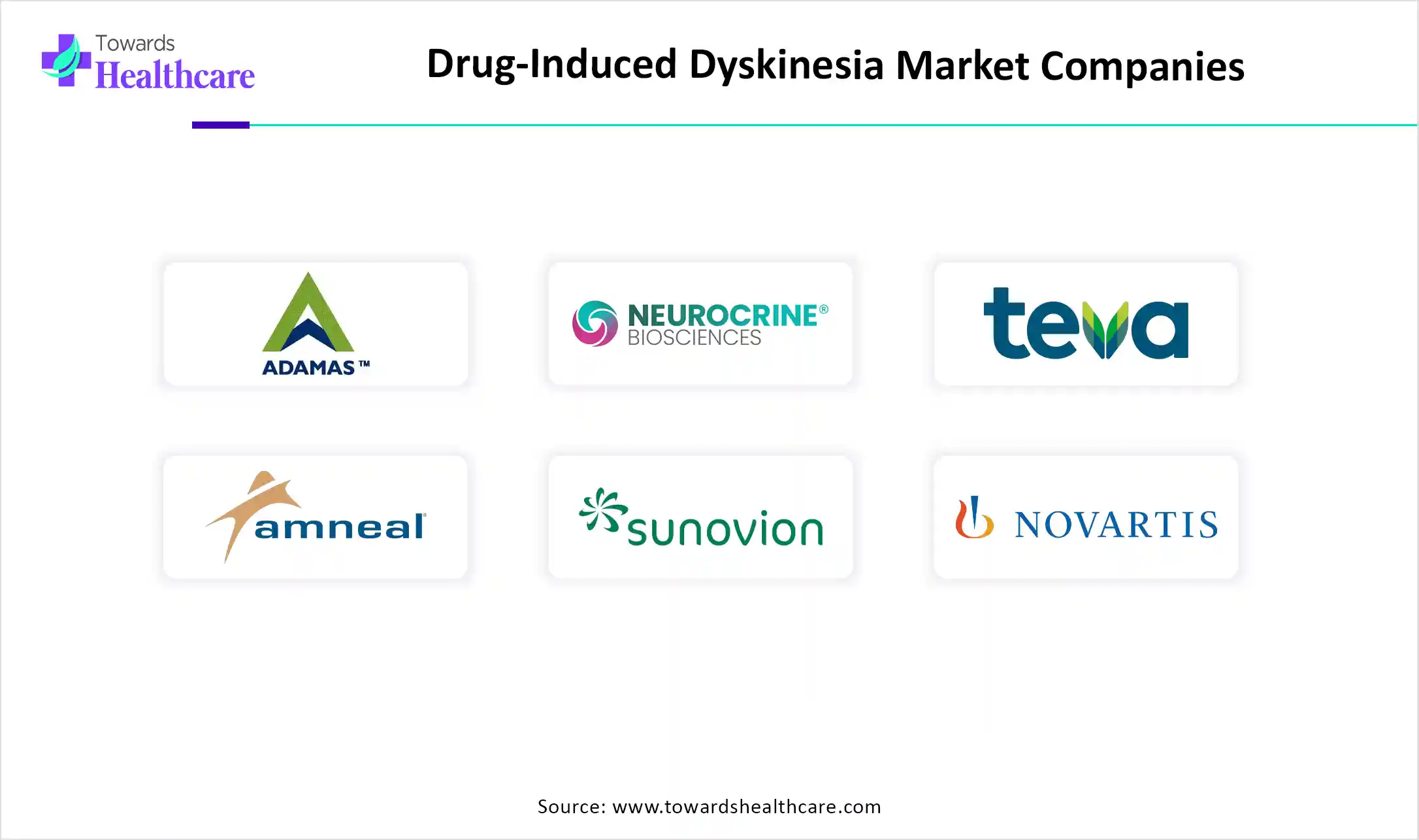

The drug-induced dyskinesia market size is calculated at US$ 418 million in 2024, grew to US$ 436.2 million in 2025, and is projected to reach around US$ 627.5 million by 2034. The market is expanding at a CAGR of 4.34% between 2025 and 2034.
The standard treatment for tardive and drug-induced dyskinesia is now VMAT 2 inhibitors because of their demonstrated effectiveness, good safety record, and numerous regional regulatory approvals. Their use is growing; these medications efficiently lessen involuntary movements and control dopamine release. Sales growth is being driven by the increasing acceptance among psychiatrists and neurologists. To increase treatment options, businesses are also spending money on next-generation VMAT 2 inhibitors.
Increasing focus on non-dopaminergic pathways like glutamatergic and serotonergic modulation
Motor complications are frequently made worse over time by conventional dopaminergic medications. The focus of research is therefore shifting to other neurotransmitter systems like glutamate and serotonin. These medications try to lessen dyskinesia without interfering with the mainstay of Parkinsons treatment. Biotech companies and pharmaceutical behemoths are investing in R&D because of this strategy. Treatment guidelines may change in the upcoming ten years because of such therapies.
The goal of R&D is to lessen the involuntary movements brought on by chronic drug use by creating innovative treatments like gene therapies , VMAT2 inhibitors, and alternative formulations. New developments include customized treatment plans and clinical trial designs aided by AI. Enhancing medication tolerability and minimizing adverse effects for long-term patient use are further goals of research.
Key Players: Neurocrine Biosciences, Teva Pharmaceuticals, Acadia Pharmaceuticals, Ipsen Pharma.
Clinical trials are conducted on treatments to evaluate their safety, effectiveness, and potential to improve quality of life. VMAT2 inhibitors, off-label medications, and new gene therapies are subject to medical standards that are enforced by regulatory bodies such as the FDA, EMA, and CDSCO. To track treatment outcomes and safety in the real world, post-marketing surveillance is also carried out.
Key Players: Neurocrine Biosciences, Teva Pharmaceuticals, Acadia Pharmaceuticals, Ipsen Pharma.
Patient support includes education programs, symptom tracking tools, counseling for medication adherence, and outreach initiatives to improve awareness and access in underserved regions. Companies also provide digital platforms and mobile apps to facilitate communication between patients and healthcare providers.
Key Players: Neurocrine Biosciences, Teva Pharmaceuticals, Acadia Pharmaceuticals, Ipsen Pharma.
In April 2024, Neurocrine Biosciences announced that the U.S. FDA approved the Ingrezza Sprinkle (valbenazine) granule formulation, an alternative for patients who experience trouble swallowing capsules, particularly those with movement disorders linked to Huntingtons disease. CEO of Neurocrine, Kevin C. Gorman, stated, “We are proud to bring Ingrezza to people living with HD and their caregivers who now have the option of a one-capsule, once-daily treatment that has demonstrated significant improvement in HD chorea in clinical studies.”
Become a valued research partner with us, please feel free to contact us at sales@towardshealthcare.com